A beginner’s guide to exploring Canada by RV motorhome: All the information you need for your first time RVing in Canada, from choosing an RV and route planning to waste disposal and what to pack.
* This site contains affiliate links, where I get a small commission from purchases at no extra cost to you.
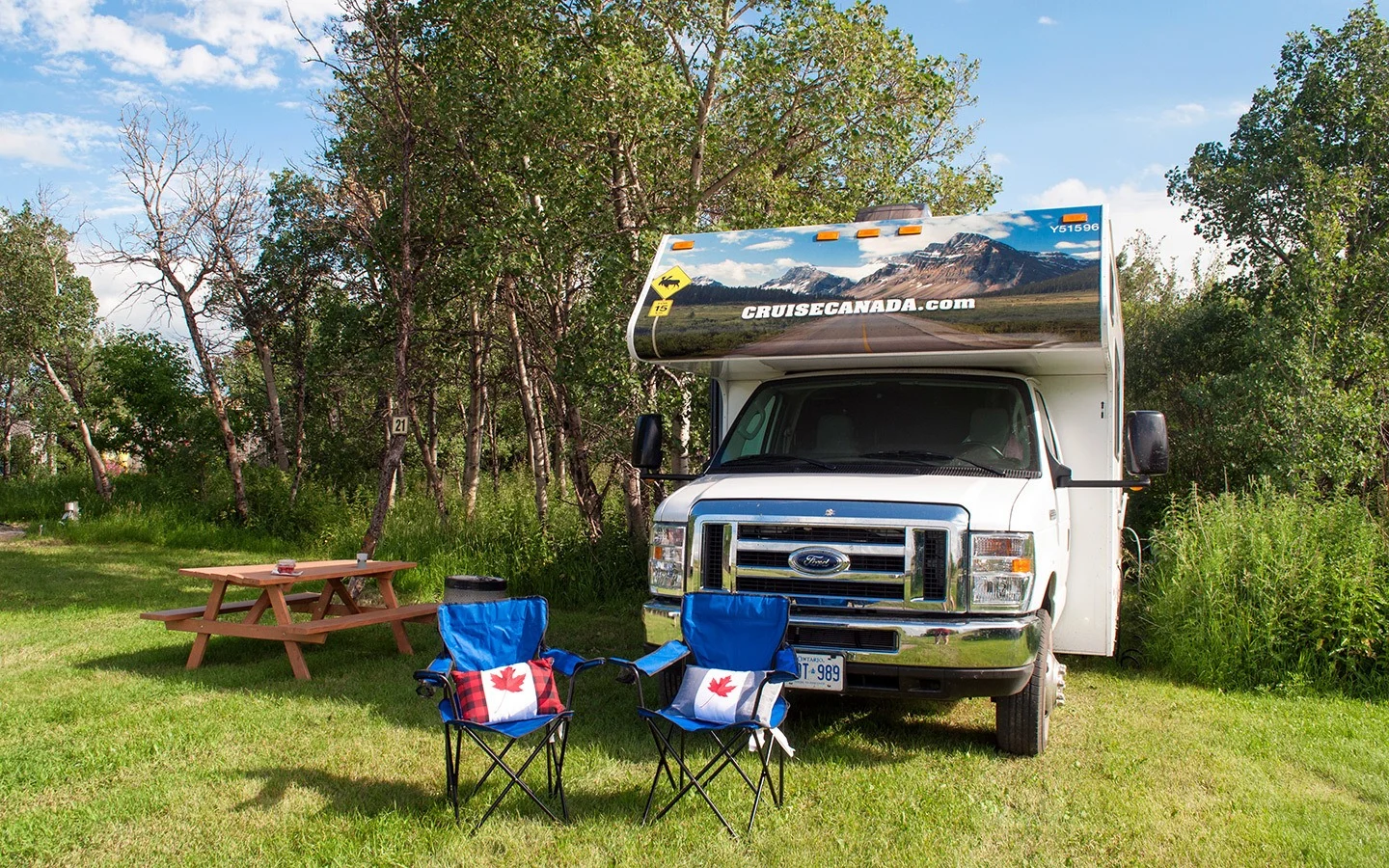
AD: My trip was hosted by Explore Canada, but all views are my own.
Two sisters, two weeks, 4500km, four provinces and three time zones – my trip across Canada by RV from Calgary to Toronto was epic in more ways than one. Especially considering neither or us had ever been inside an RV (also known as a motorhome) before. How would this self-confessed camping-phobe cope with life on the road?

RVing in Canada
Setting off from Calgary to Toronto felt like being thrown in at the deep end. But it turns out RVing is a world away from camping, and Canada’s the perfect place to try it out. Travelling by RV gives you all the benefits of camping – beautiful landscapes, nights round the campfire, the feeling of being back to nature – but without the actual tent.
But RVing was a new world with its special terminology (pull-throughs, shore lines, grey water…) and new skills to master. So I thought I’d put together a post for first-time RVers like me, or people who want to find out more about travelling around Canada by RV.
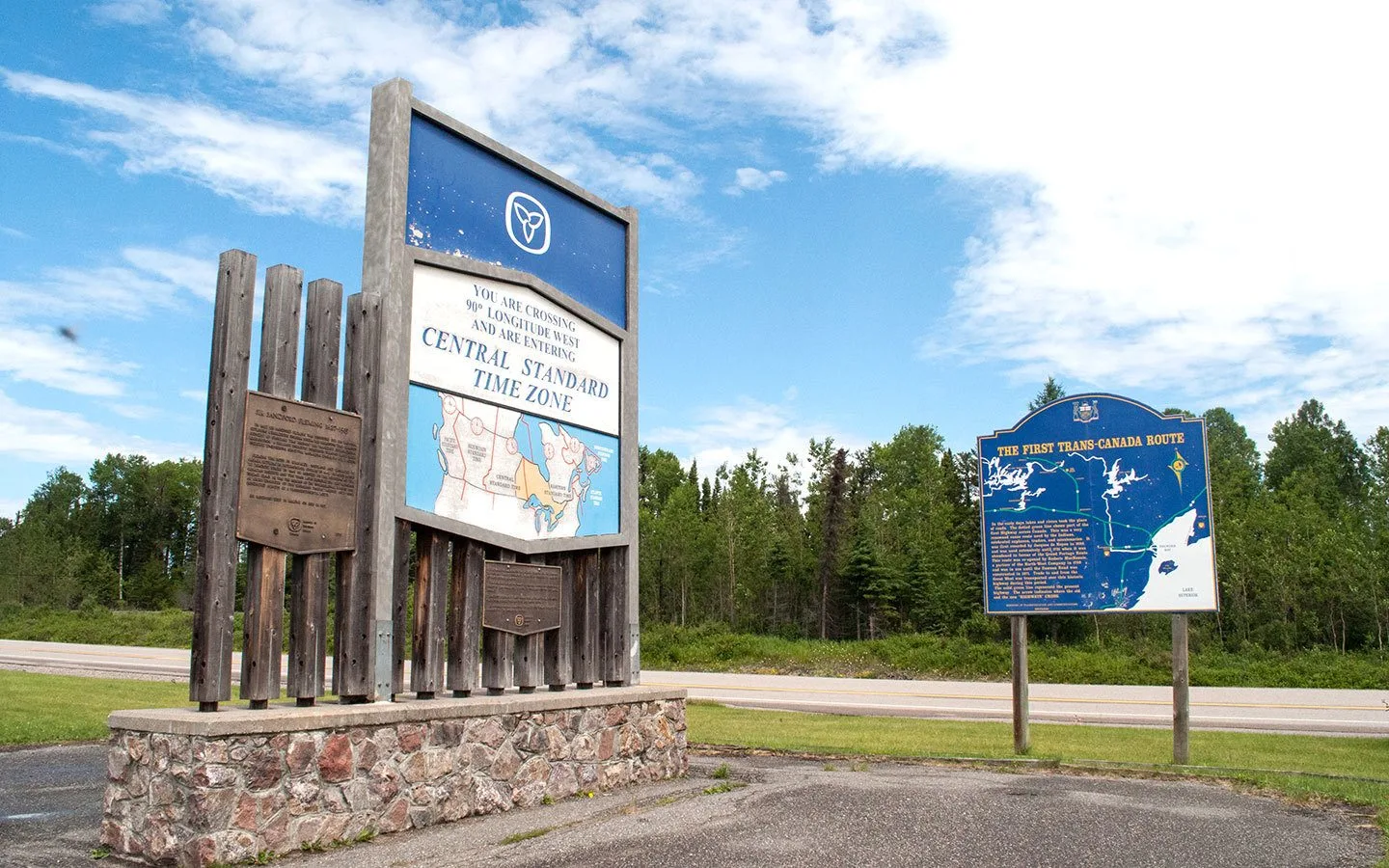
Do you have to rough it?
I’m more budget-luxury than five-star traveller, but there are a few things that are a must wherever I’m staying: comfortable bed, toilet, hot showers, space to unpack and somewhere to keep the wine cold. But my nightmares of freezing nights and mornings spent sweltering at 5am in a tent quickly faded. RV life is a lot more like living in a mini mobile apartment.
It’s surprising how much you can pack into a small space. Our RV was a Cruise Canada ‘Standard’ model – which was 25′ long with two double beds, a bathroom with toilet, shower and sink, and a kitchen with gas cooker, microwave, fridge-freezer and sink.
The kitchen’s well equipped so you don’t need to rely on campfire cooking; we whipped up steaks and stir fries on board, with plenty of storage space in the fridge and cupboards. And there’s both air con and heating to deal with extreme temperatures.
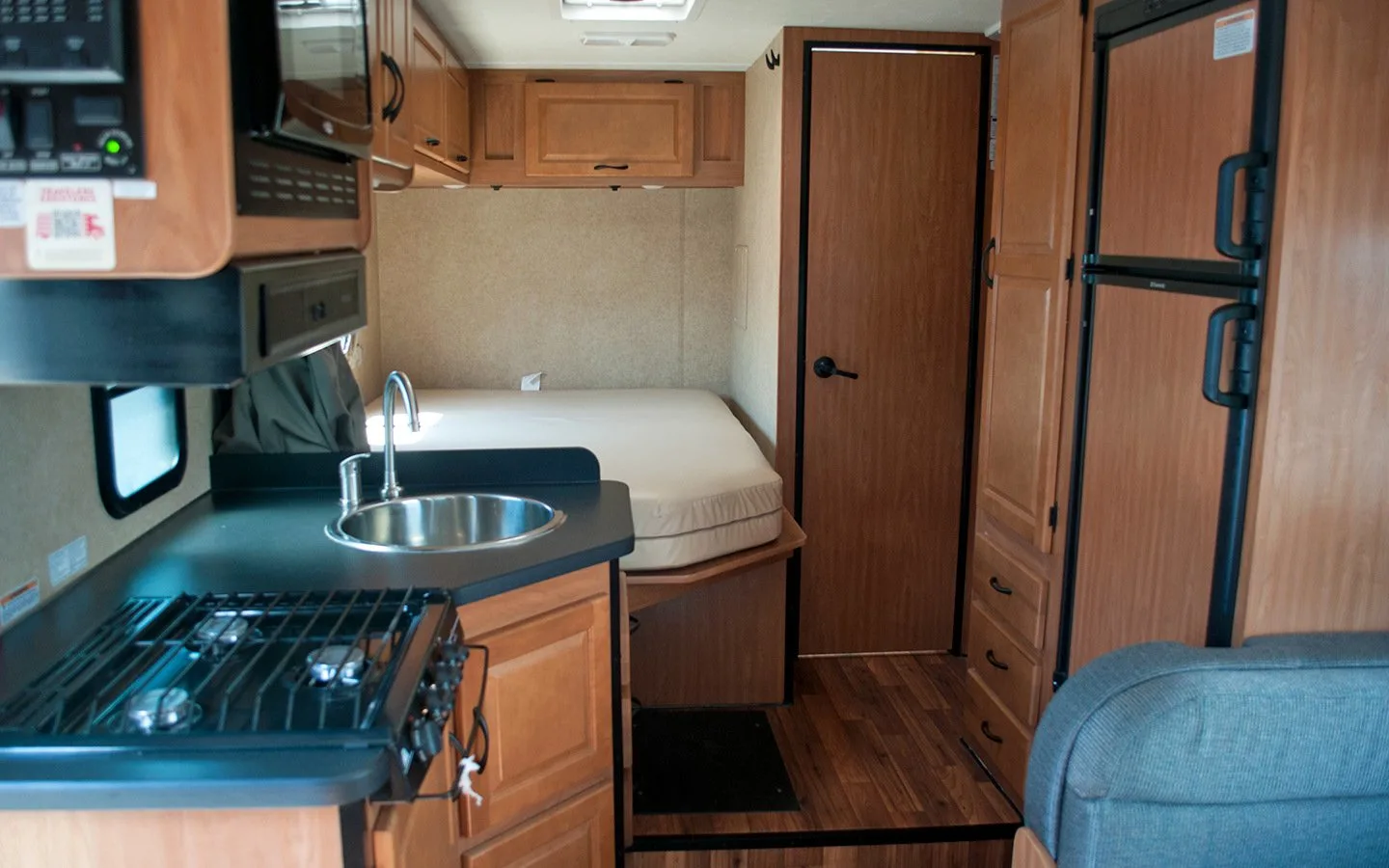
It’s a good tip to get a bigger RV than you think you need. Ours was listed as sleeping five but was perfect for two or three people. Any more and you’d be tripping over each other. Though you probably want to make sure you travel with someone you get on well with.
You’re going to be in pretty close confines and RVing requires lots of teamwork so there’s not much room for personal space. Luckily my sister and I have spent many family holidays to France in the back of a 1970s VW camper van so we’ve got plenty of experience.
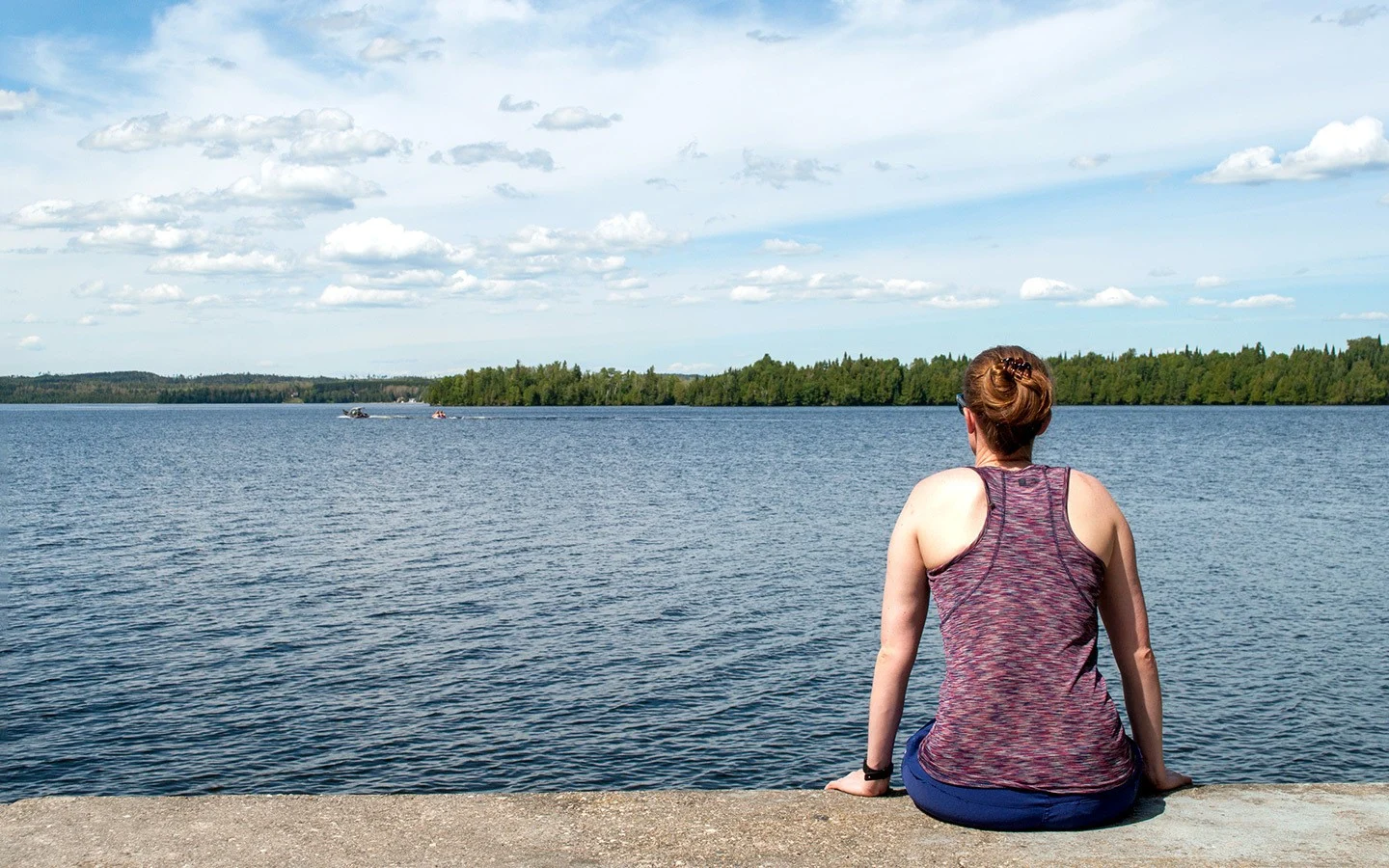
Exploring Canada by RV is also a digital detox, away from TVs, computers and phones. Internet addicts can get their fix with a portable wifi device that works off phone signal. But in large parks like Algonquin the signal doesn’t stretch far into the park so you’ll have to have an enforced technology sabbatical. Leaving more time to spend outside.
The evening campfire was one of my favourite trip rituals. Getting the fire going, searching for the perfect marshmallow stick, making s’mores, talking about what we’d seen that day and where we were off to next. And if it rained, we could stay snug inside the RV, watching films on a laptop and toasting marshmallows on the hob – you can’t do that in a tent.
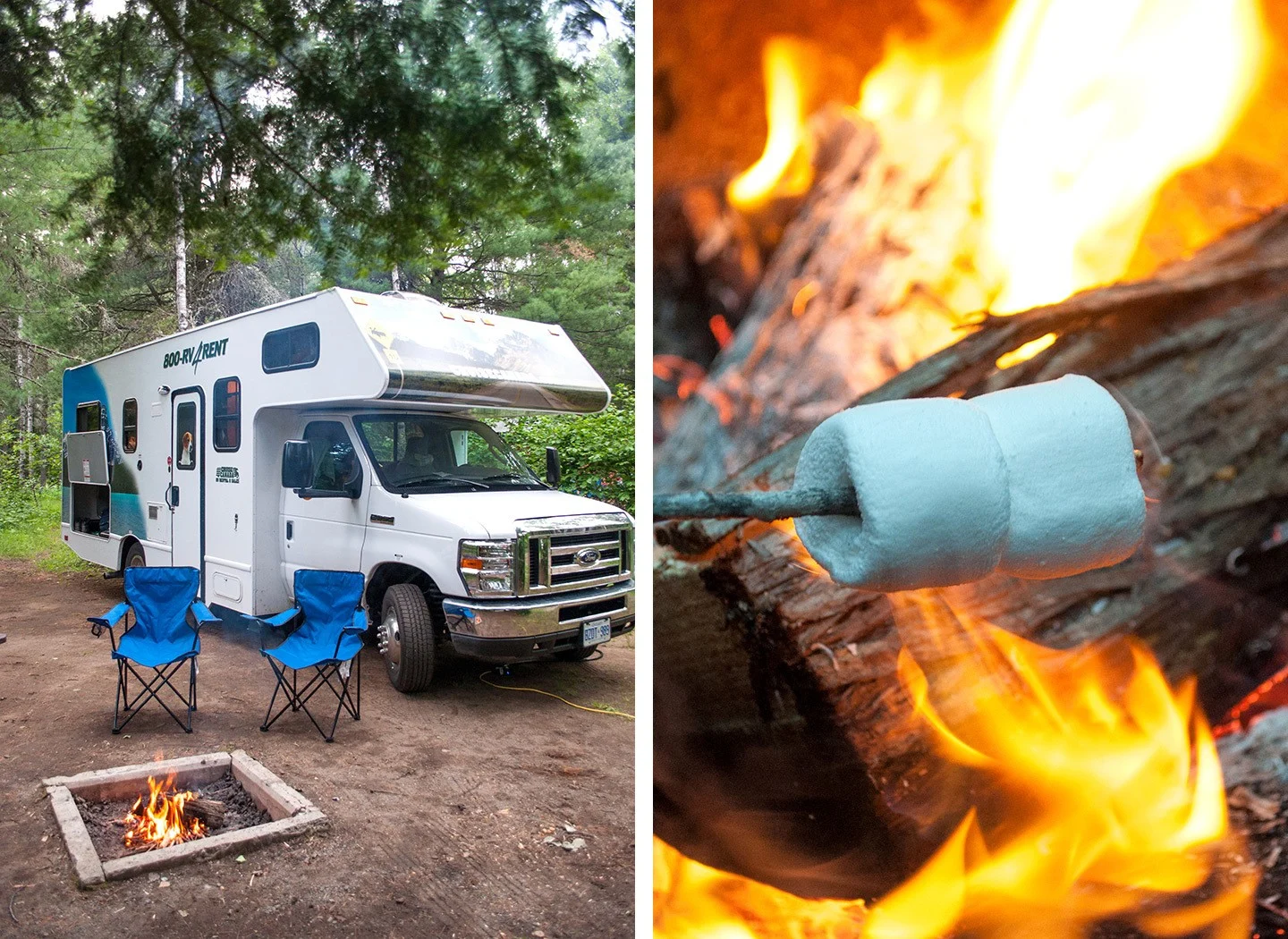
Isn’t RVing just for retirees?
Canada and the US have a real RV culture. People retire, sell up, buy a big RV and drive south for winter and north for summer, travelling as long as they can. So I was expecting that two British women in our 30s would be an unusual sight around the campsites.
But in general the demographic of our fellow RV travellers was a lot more varied than I imagined. There were a mix of couples, families and groups of friends, with international travellers as well as plenty of Canadians exploring their own country.
Even the long-term RVers were a more mixed group than I expected. As well as retirees we also met families who were travelling with their kids before they started school, as well as people who work remotely so don’t need to have a full-time home base.
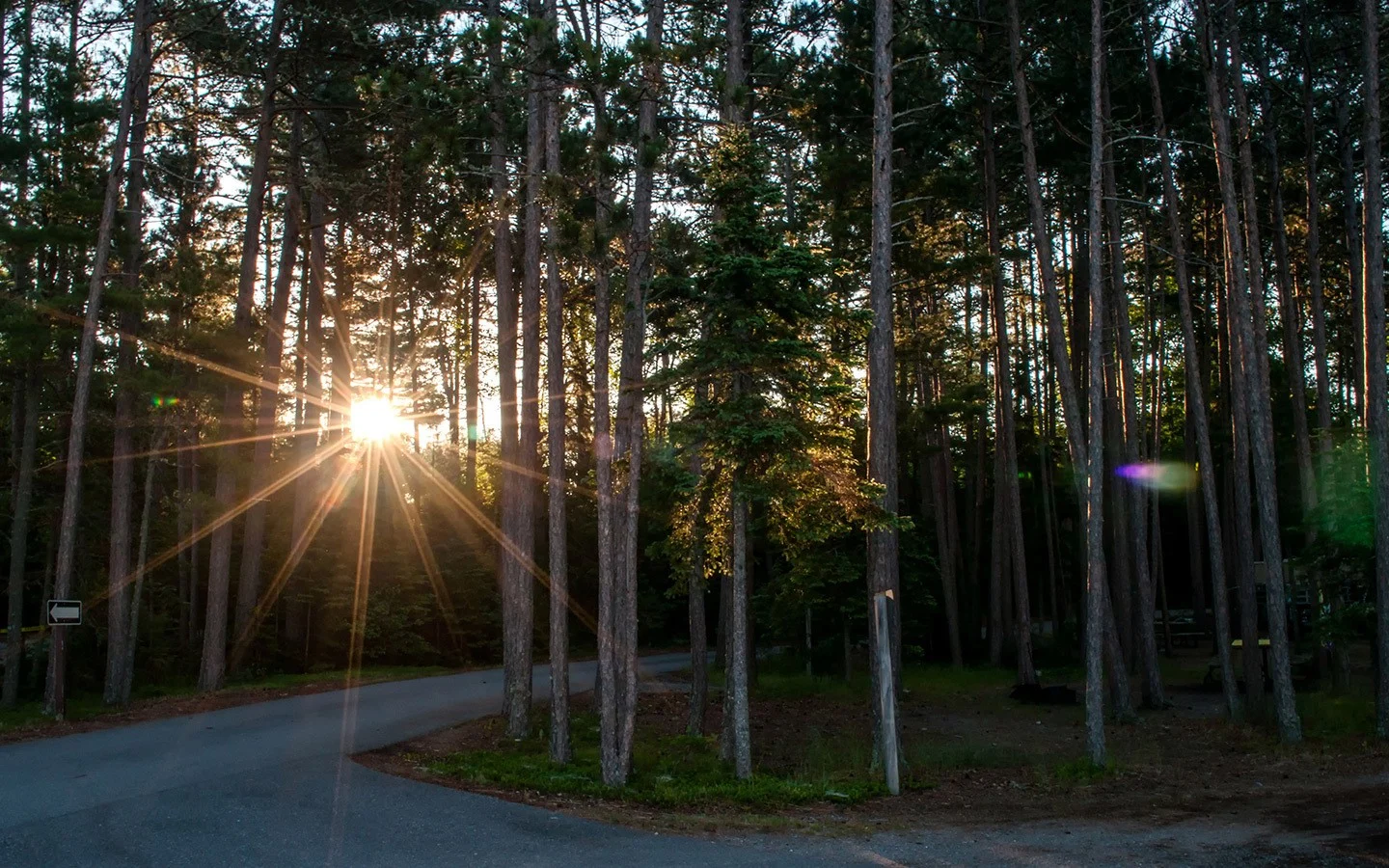
Long-term RVers are easy to spot though – they’re the ones with doormats, potted plants and array of collapsible gadgets. They’re also the ones who can help if you need a hand or don’t know how something works. When we arrived at Lake Superior and couldn’t park close enough to the electricity hookup to plug in, our neighbours lent us an extension lead.
All the RVers we met were happy to share their expertise with us newbies. And one of the nicest things about visiting Canada by RV is that it’s much more sociable than a hotel. Everyone spends their time outside so it’s easy to get chatting to your neighbours.
We met some really lovely people from all over the world. We toasted Canada Day around the campfire with a neighbour in Regina Beach and were introduced to ‘hobo pies’ (a kind of toasted jam sandwich) by the lady next door in Aaron Provincial Park.

How do I plan my Canada RV itinerary?
Where to start? Coastal drives, cross-country, mountains, National Parks – the choices are endless. It might be tempting to wing it and see where you end up, but the best campsites get booked up, especially at weekends, in popular areas like the Rockies and during the summer months. So it’s a good idea to plan your route and book overnight stays in advance.
We planned to arrive into our campsites around 4pm while it was still light. That gave us time to set up the RV, light a campfire and stretch our legs with a walk around the site. It’s also recommended not to drive at dawn or dusk as moose and deer venture onto the roads.
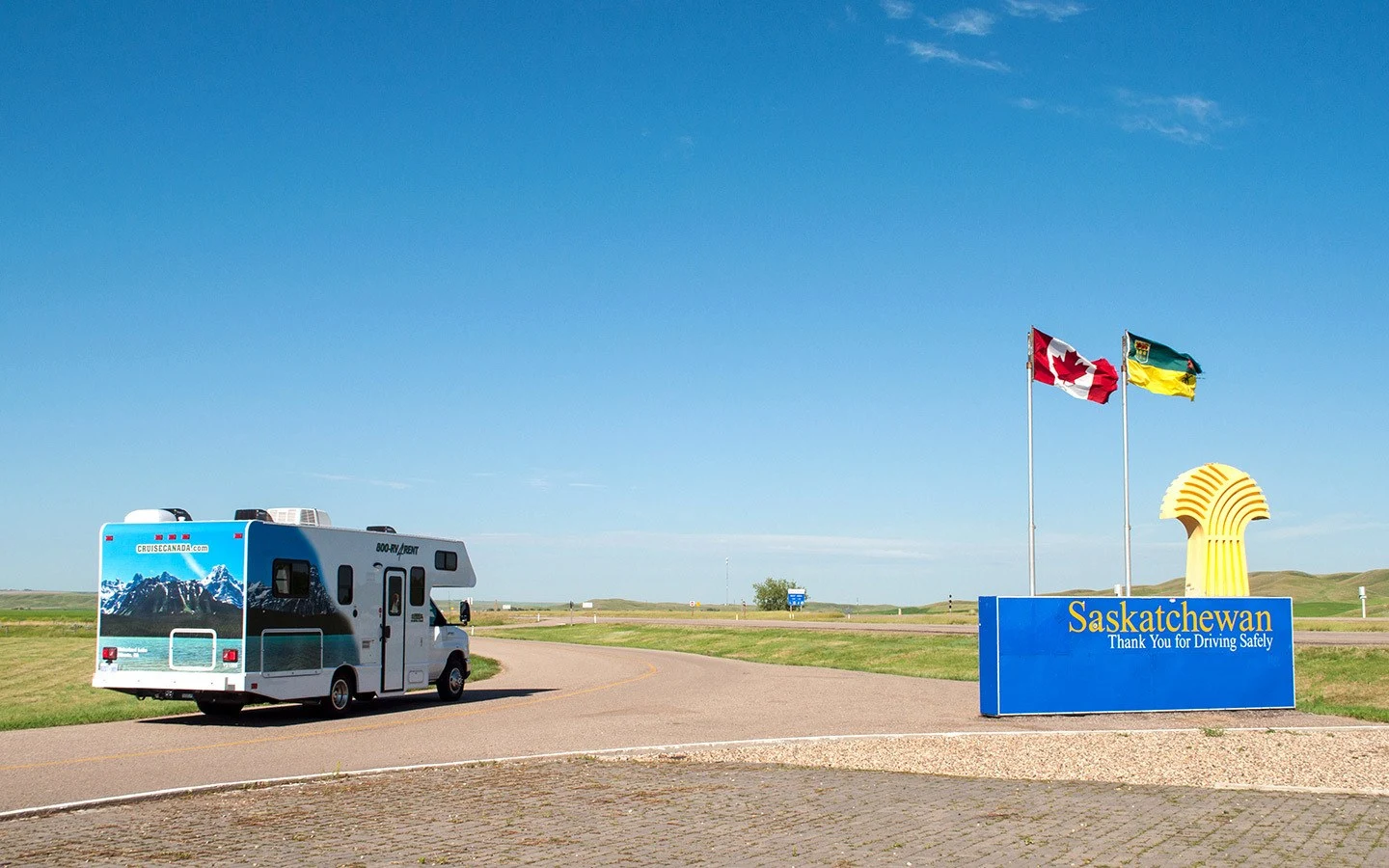
When planning how long journeys will take, Google Maps tends to underestimate the time it takes to travel in an RV. We downloaded the free Navmii Canada GPS app which we found was more accurate. It works offline if you don’t have phone data and you can also get it to show you nearest fuel stations – helpful when you’re in the middle of nowhere. A good old-fashioned paper road map is useful too in case you can’t get a phone signal.
The quickest route from A to B is usually via the highway. But if you get off the main roads there’s more to see, so factor in plenty of time in case you spot something interesting along the way – the Roadtrippers website has some good ideas. The joy of RVing in Canada is you can just pull over and stop and make a cup of tea or have lunch when you feel like it.
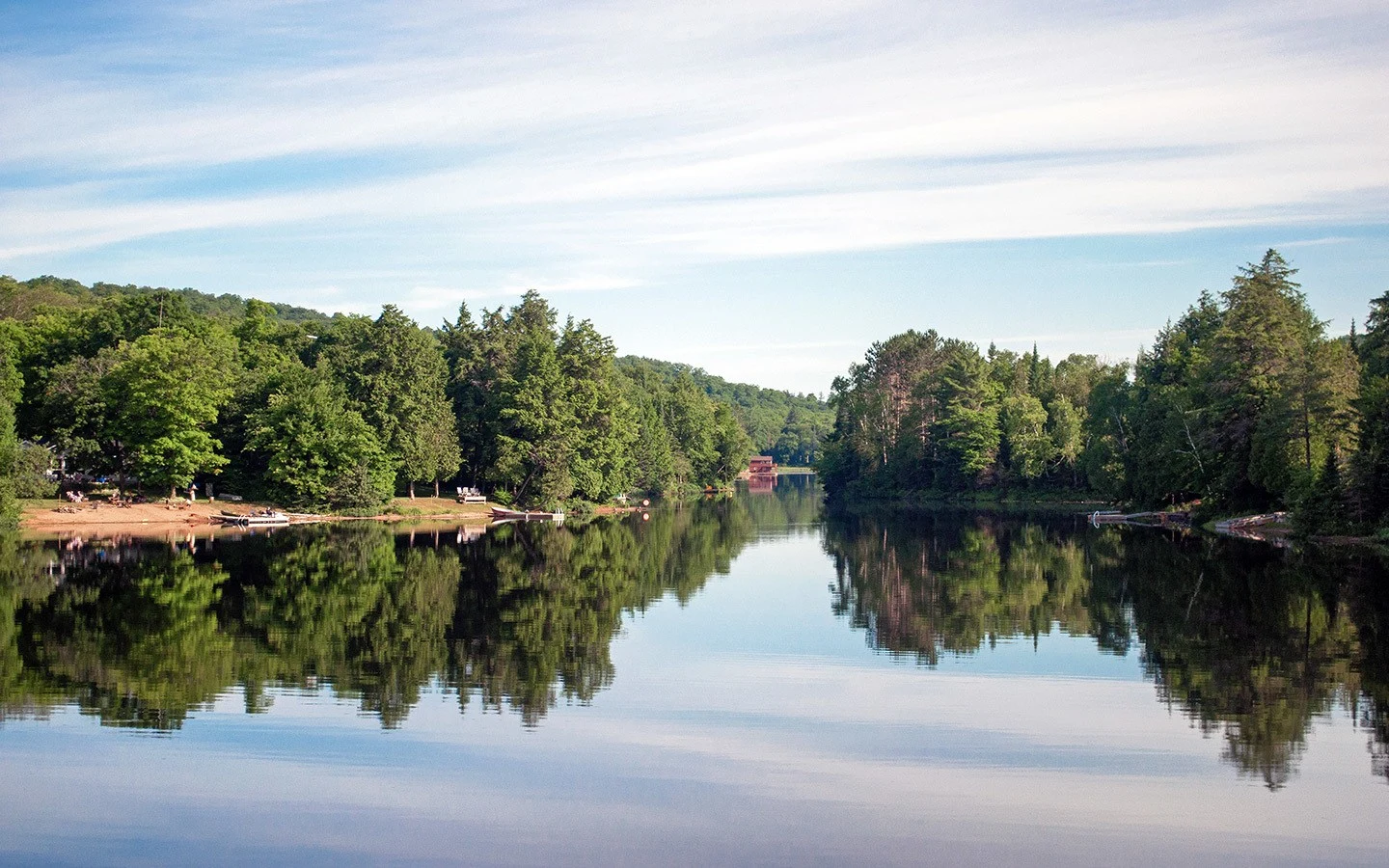
What facilities do campsites have?
Canadian campsite facilities vary a lot depending on the location and size of the site – our experiences camping in Alberta, Saskatchewan, Manitoba and Ontario ranged from simple pitches in the forest to full holiday complexes. The larger, privately run sites often come with additional facilities like shops, cafés and swimming pools.
You’re also more likely to get a full hookup where you can connect your power, water and sewage lines directly from your pitch. But most of the time we stayed in Provincial Park campgrounds which were more ‘back to nature’. There was usually a reception building where you check in and can stock up on ice and firewood.
Then there were toilet and shower blocks with laundry facilities (keep a supply of ‘loonies’ – aka one dollar coins, the name comes from the birds which are pictured on them). Most had electrical hookups and filling/dumping stations for water and waste.

The facilities might be simple but the location is what makes these campsites so special. We parked up next to lakes, waterfalls and forests. But my favourite spot was at Lake Superior Provincial Park. The campsite ran along the edge of the lakeshore with just two rows of RVs surrounded by tall pine trees. Within 10 metres of our pitch was a huge sandy beach and a lake which stretched as far as you can see, with a bench perfect for a sunset G&T.
You’ve also got wildlife all around you. We had gophers popping up in Regina Beach and a raccoon who raided next door’s cool box for cereal bars in Killarney Provincial Park. Though you need to be careful not to leave food out in areas where there are bears.
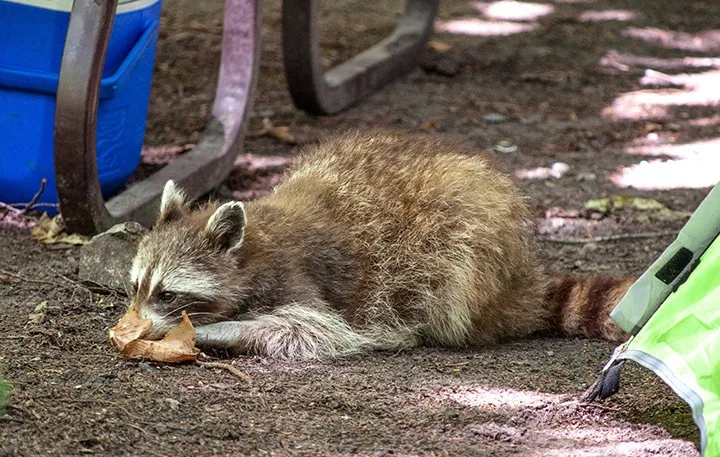
Is it hard to drive an RV?
I delegated this question to my sister as she was the designated driver for the trip, but despite never having driven an RV before she had no trouble with it. Like any large vehicle it takes longer to get going and to stop, so leave plenty of space around you.
Canadian roads are generally fairly wide and straight, and outside the towns and cities it’s not too difficult to navigate (we pretty much joined the Trans-Canada Highway in Calgary and got off it two weeks later when we reached Toronto).
Do make a note of the RV’s width and height just in case you have to go through a small space or low bridge. The gas tank takes a while to fill up (our record was $200 of fuel) and if you’re going faster, like on long straight prairie roads, you get through fuel quicker.
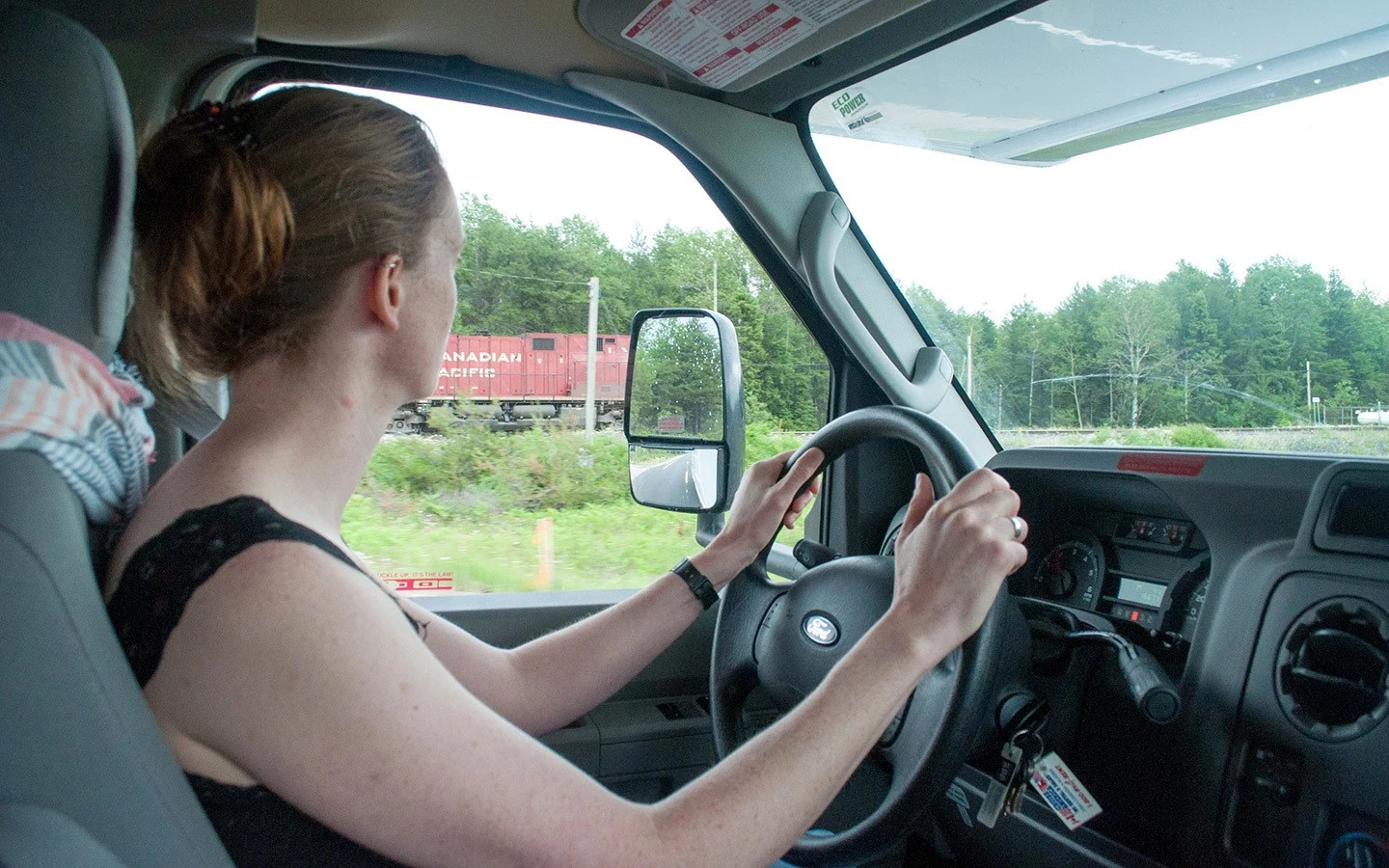
When you arrive into a campsite your pitch will either be ‘pull-through’ – where you can drive straight in – or you’ll have to reverse in. RVs aren’t the easiest things to reverse as visibility is limited in the mirrors, so we found it easier for me to get out of the vehicle and shout directions (seasoned RVers recommend a walkie talkie if you’re doing this a lot).
It can be hard to find somewhere to park up if you’re stopping in towns and cities. It’s a good idea to research parking lots in advance. Some have extra-large spaces for RVs or otherwise be prepared to practice your parallel parking skills if parking on the street.
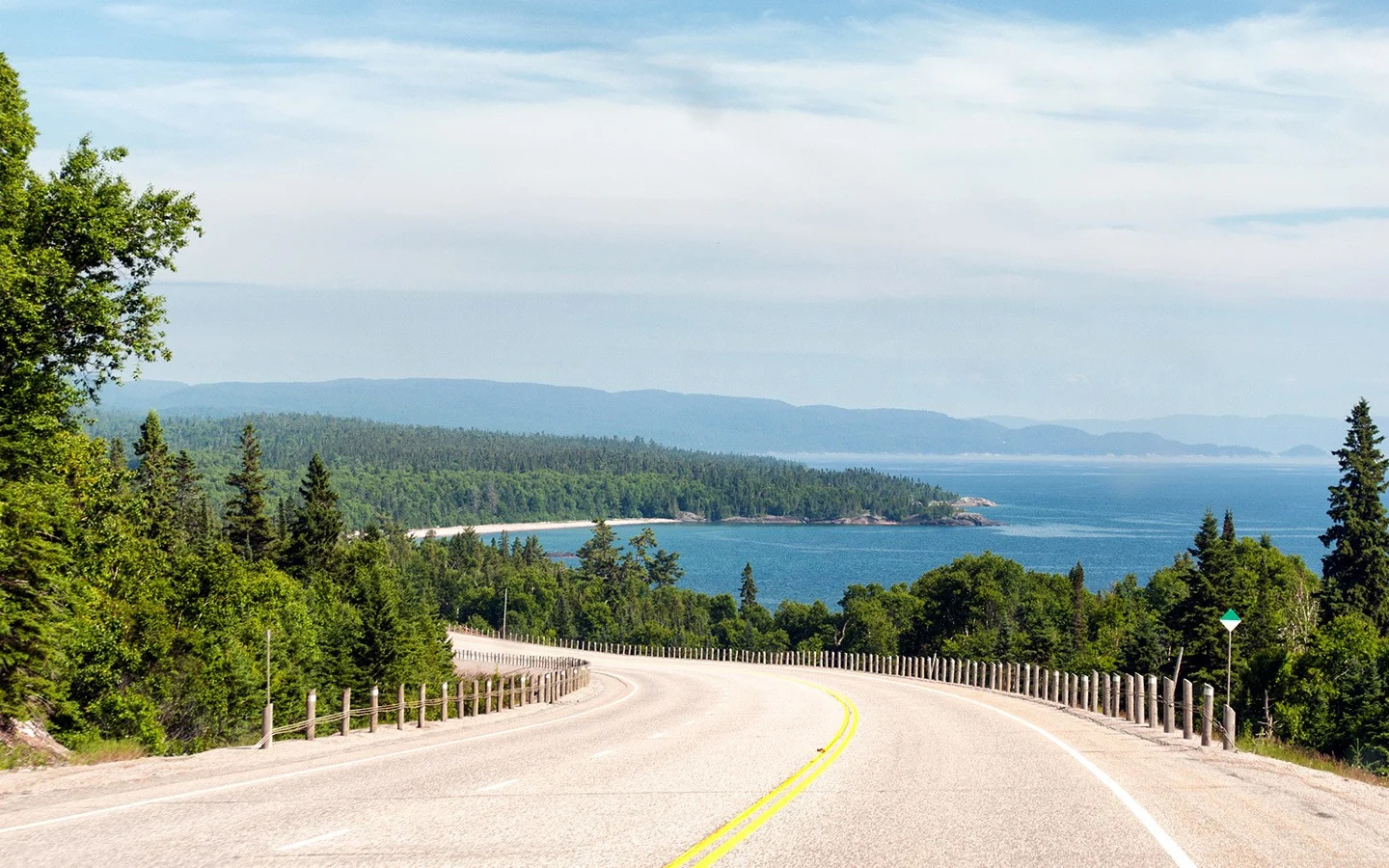
What about the dreaded RV waste disposal?
The one thing that strikes fear into prospective RVers is emptying the toilet tank. Not something you normally have to do when you’re on holiday! But it’s really not as bad as I imagined. The RV has two separate waste tanks – one for grey water (from the sinks and shower) and one for black water (from the toilet).
Some sites have a hookup for the sewage pipe where you can leave it connected. But on all of our campsites you had to empty the tank at the site’s dumping station. A control panel inside the RV tells you how full the tanks are. You can go for a few days without emptying them, but it does weigh you down and being heavier means you get through more fuel.
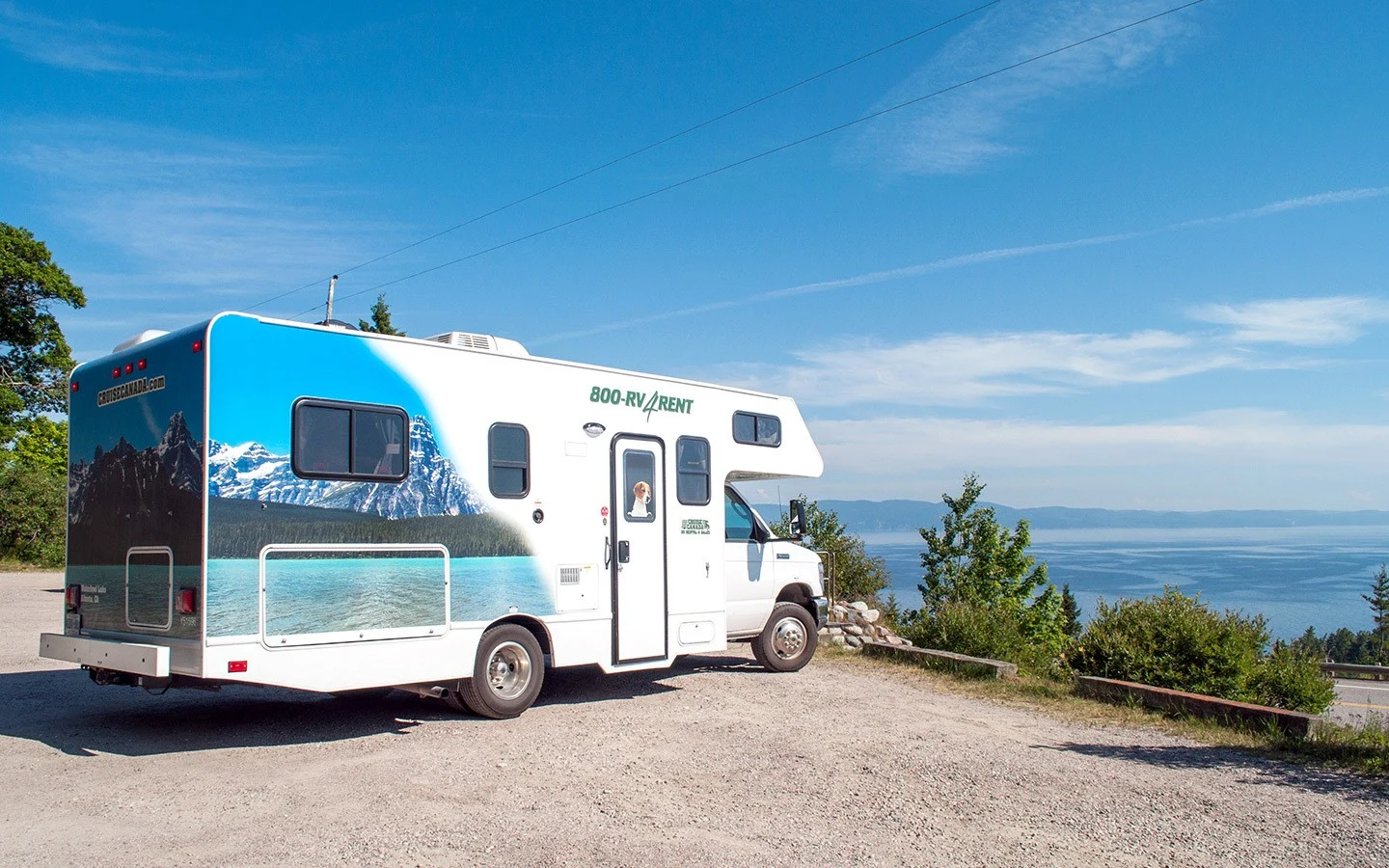
So we went for the ‘little and often’ approach and dumped our waste every day or two. An expandable pipe pulls out from the side of the RV and connects securely into a valve in the ground. Then you pull the handle to release the black water first and then the grey to wash it through. There are a couple of things you can do to make it all a bit less unpleasant.
First buy some heavy duty rubber gloves (we kept ours in a plastic bag in the storage compartment under the RV) and second get some tank cleaner/deodoriser tablets to make things smell a bit sweeter. You can also pay a supplement not to have to empty the tank when you return the RV to the depot, which is worth it if you’re in a hurry on the last day.
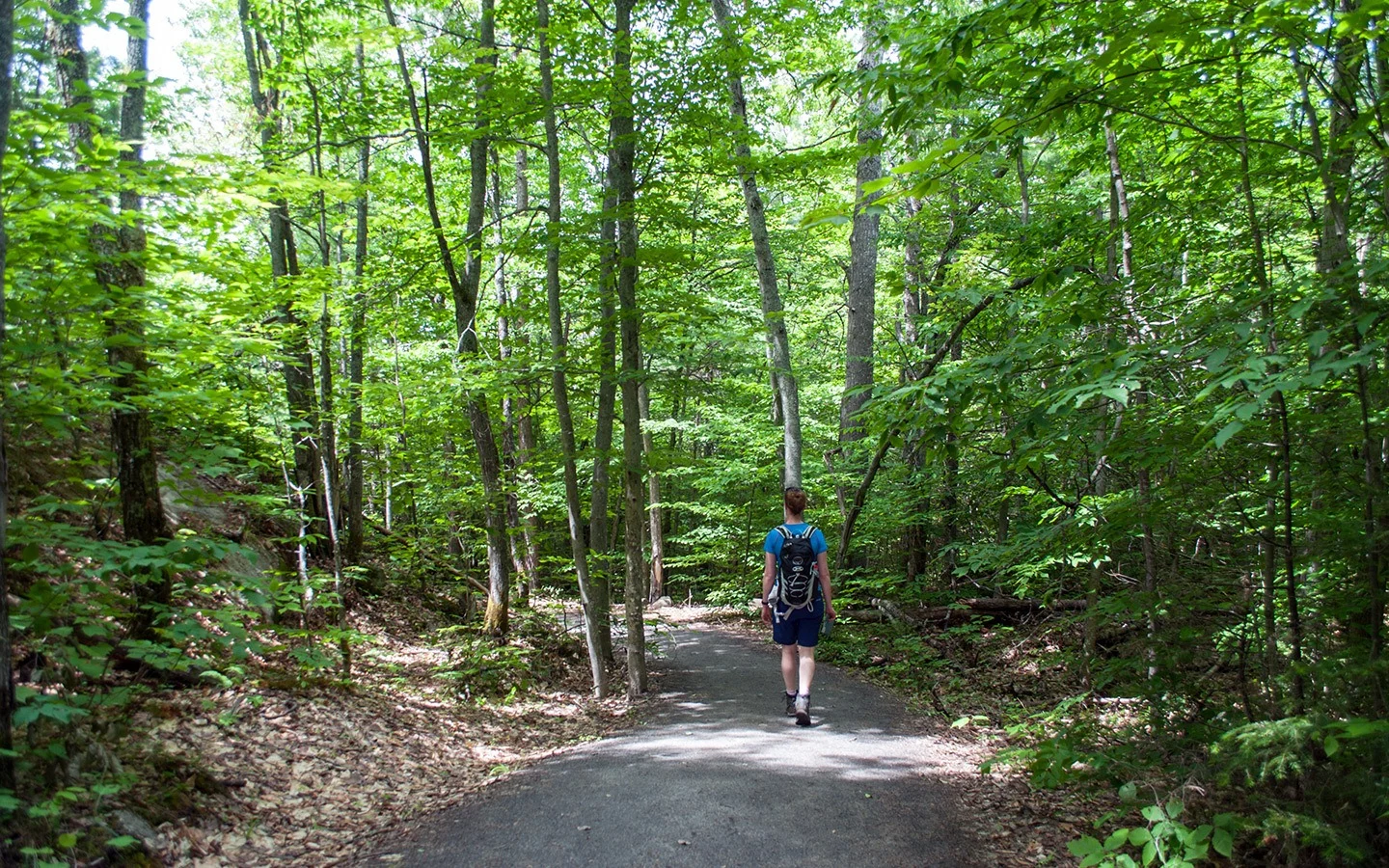
What do I need to pack?
One of the bonuses of exploring Canada by RV is having plenty of storage space, so you’ve got room to pack the RV or motorhome accessories to help make your trip easier.
We had a wardrobe, two sets of drawers and cupboards above the bed and table. There’s also a storage area underneath the RV for a folding table and chairs plus firewood and suitcases. Once you’ve unpacked, you don’t need to pack up again until the end of your trip.
If you go out for the day and realise you should’ve worn an extra jumper or need a coat or suncream, it’s all there with you. But if you’re flying internationally you’re not going to want to carry pillows, towels, saucepans and crockery with you (the kitchen sink is included!).
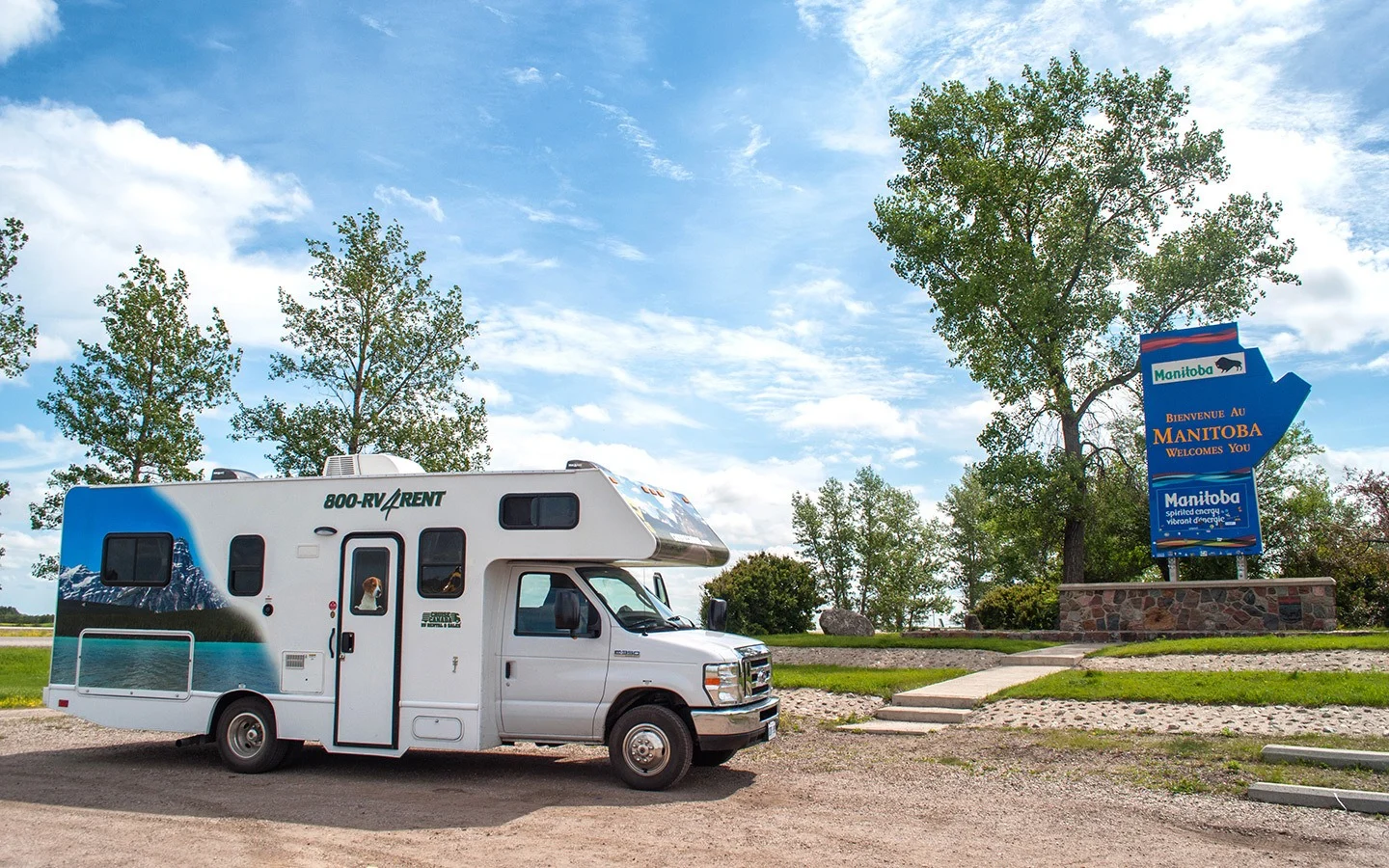
Cruise Canada offer a couple of different equipment kits. We had a provisioning kit ($125) which included cutlery, crockery, pots and pans, a kettle, can opener, knives and chopping board, plus extras like a torch and broom. There’s also a personal kit ($75 per person) with towels, a pillow and duvet. It’s a good idea to reserve these kits in advance.
Nights can get cold so you might want to bring or buy a blanket and pack some thermal pyjamas – I kept a fleece and a pair of socks next to the bed so I could add extra layers if I got cold in the middle of the night. The RV does also have heating if it gets really chilly.
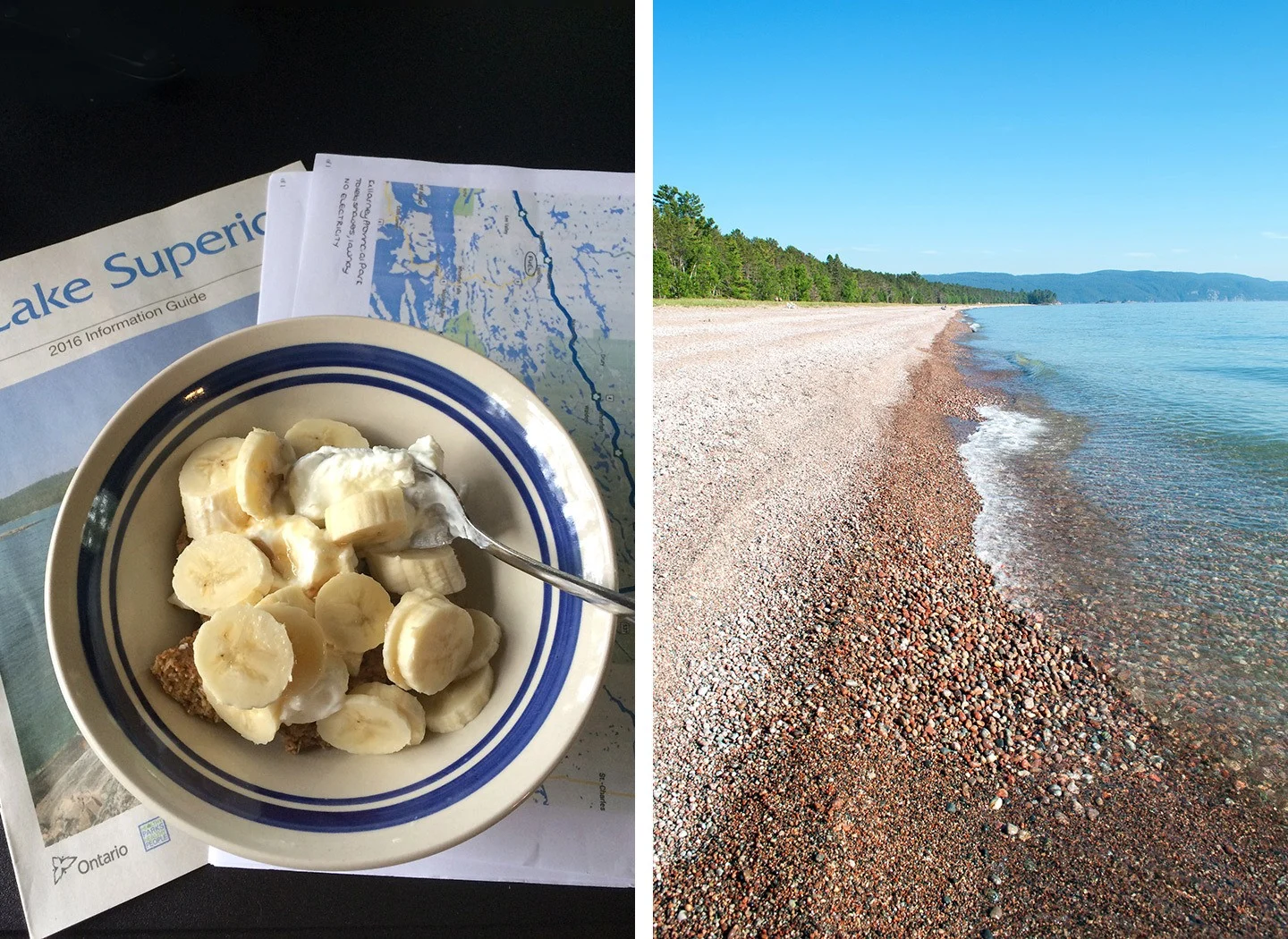
Make sure you pack everything in tightly before you set off. Our last campsite in Algonquin Provincial Park was down a six-mile stretch of unsealed road. Within a couple of minutes of rattling along the road the wardrobe door had flown open, water bottles were shooting across the floor and the drawers had thrown half their contents out.
Even bumps and bends along an ordinary road can send things flying, so make sure everything is stowed away before you set off. The RV’s crockery cupboard has dividers to keep plates and cups safe. But things do slide around the food cupboard above the dining table. So it’s a good idea store your groceries in a box so they don’t get shaken about.
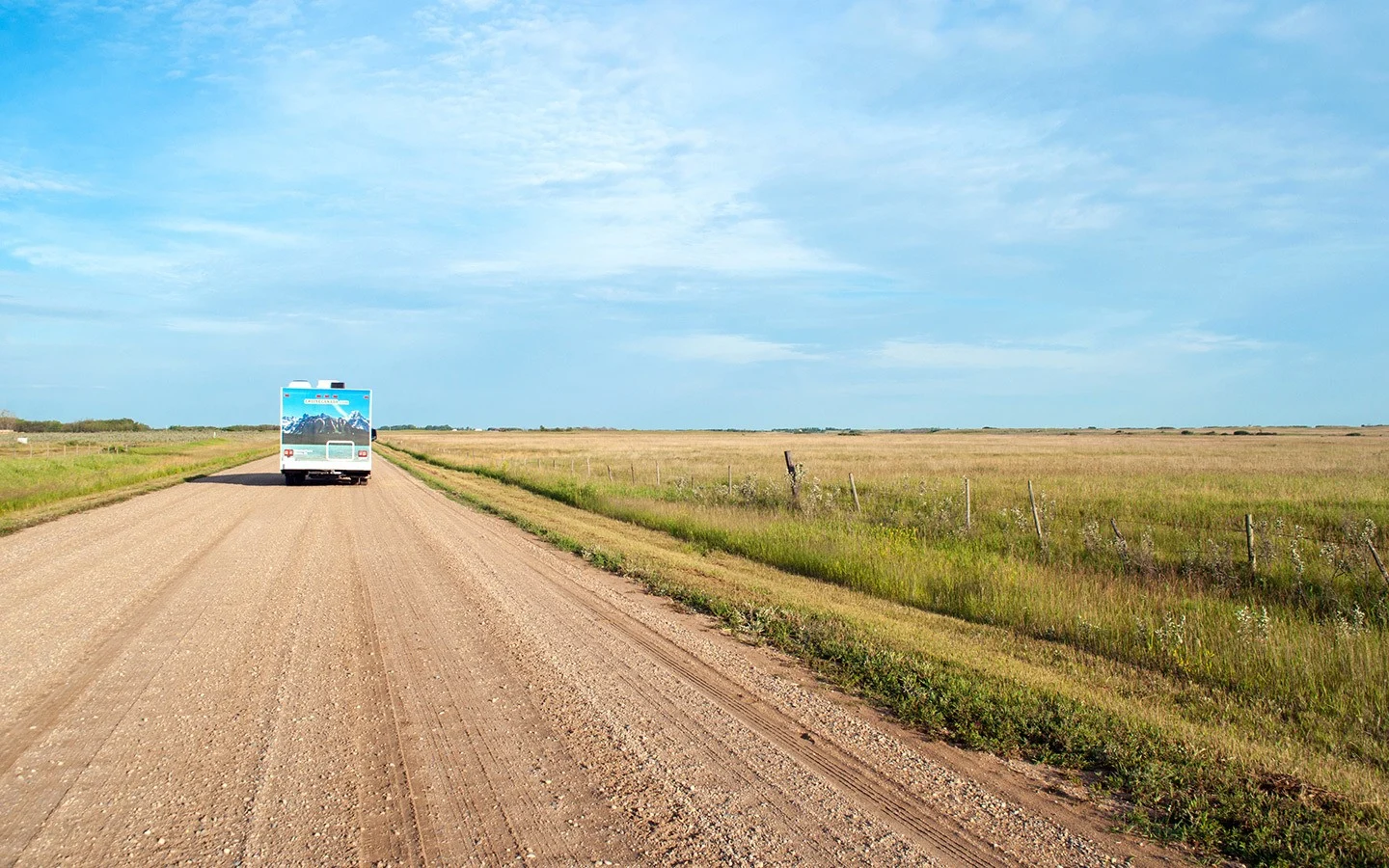
Being outside means you’re exposed to a few creepy crawlies. Canadian mosquitoes can be vicious, especially in the summer, so it’s a good idea to pack mosquito repellent* and bite cream, and pick up citronella candles or mosquito coils*. Cover up your arms and legs up at dusk and you can also get clothing impregnated with repellent to keep them away.
Other bits and pieces we found useful to have were a washing line and pegs* (to air towels and dry clothes if you’re doing any hand washing), a grill if you want to cook outside, matches and firelighters (you can buy these along with kindling and logs in most park shops) and plenty of marshmallows for toasting over the campfire.
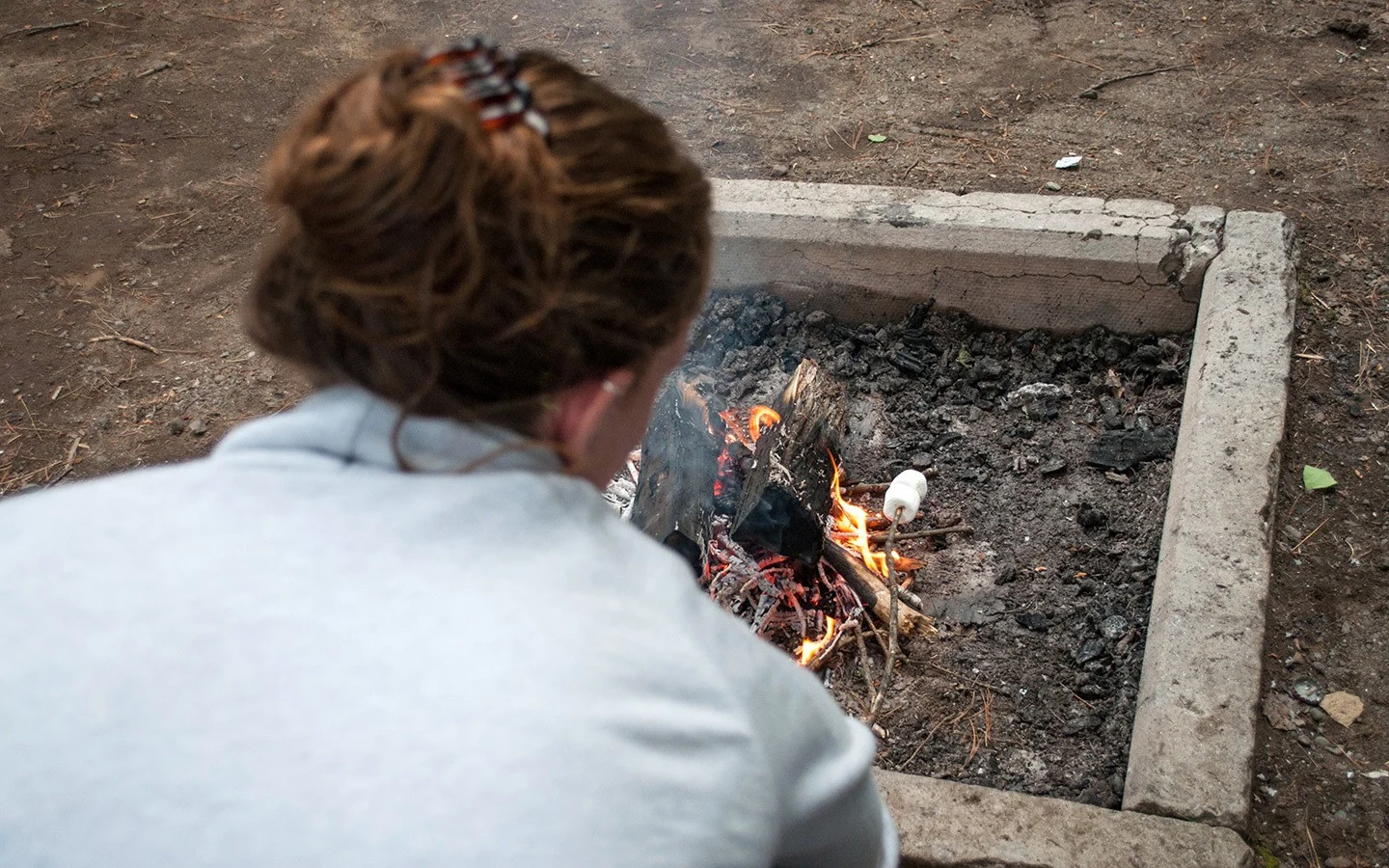
Where to next?
The thing with RVing in Canada is that it gets addictive. The freedom to go whenever you fancy, the convenience, the chance to dip your toes in the outdoor lifestyle without having to rough it. So the only question left is where to next? Maybe the Rockies, the Cabot Trail through Nova Scotia or the coast of Newfoundland – who knows where the road will take us?

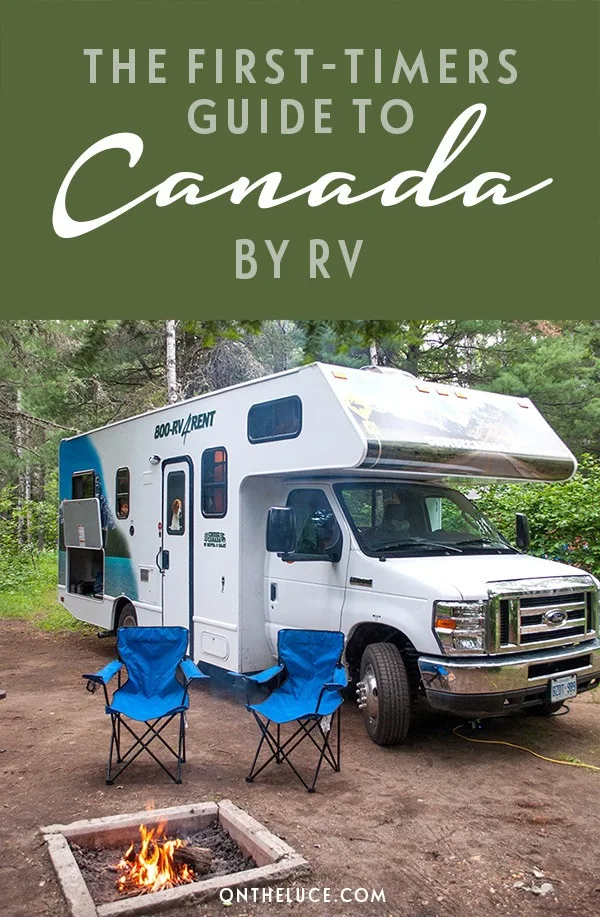
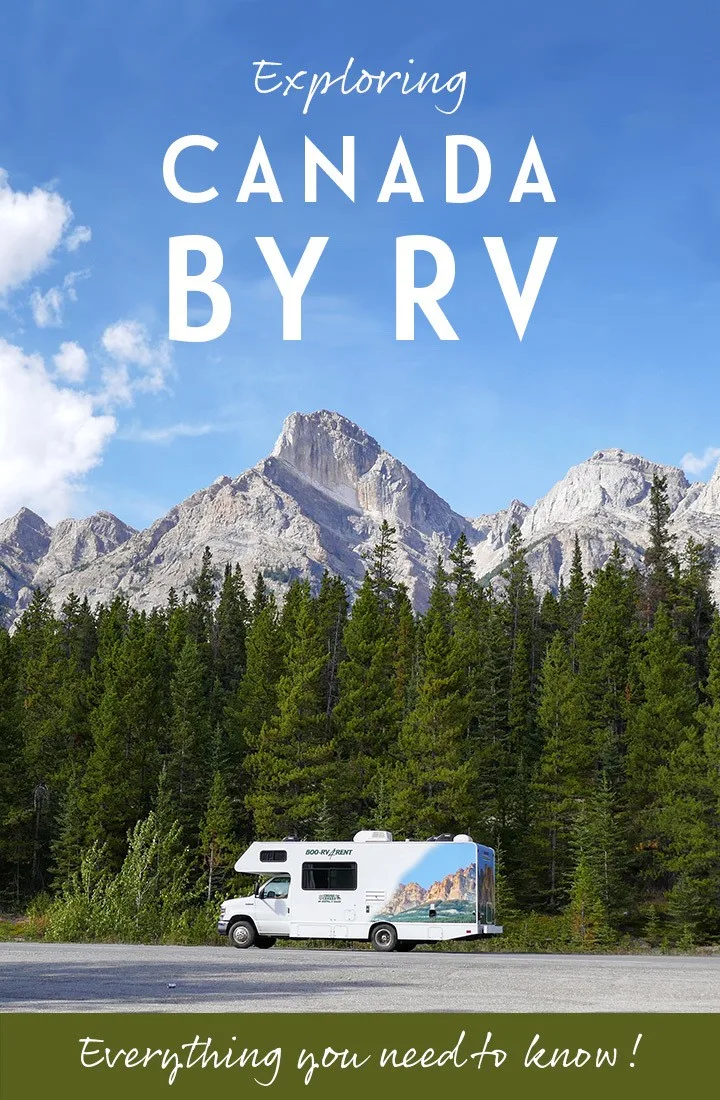
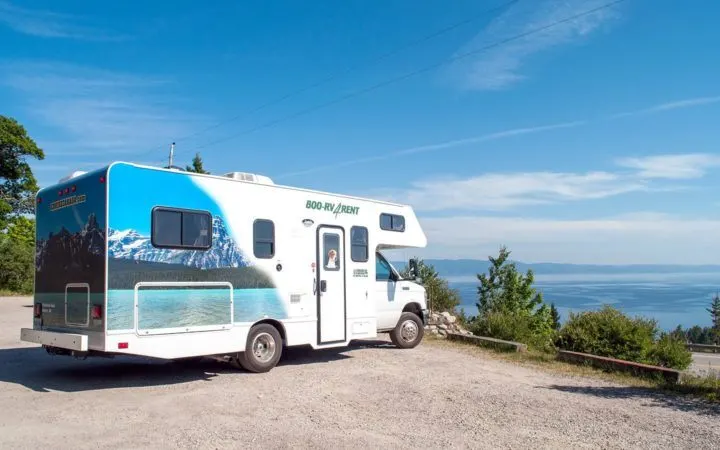
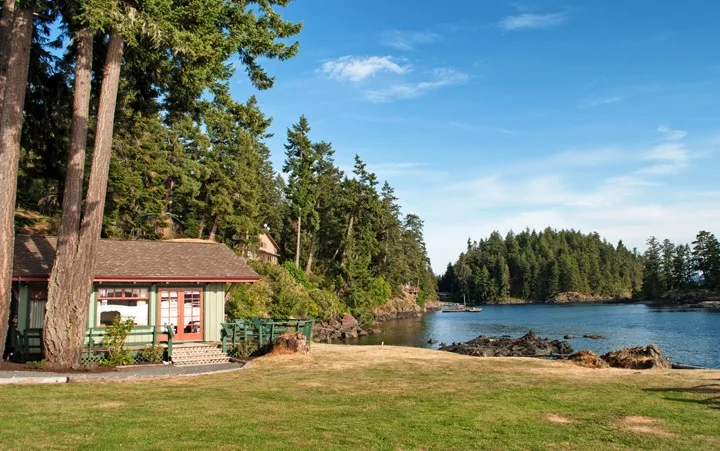
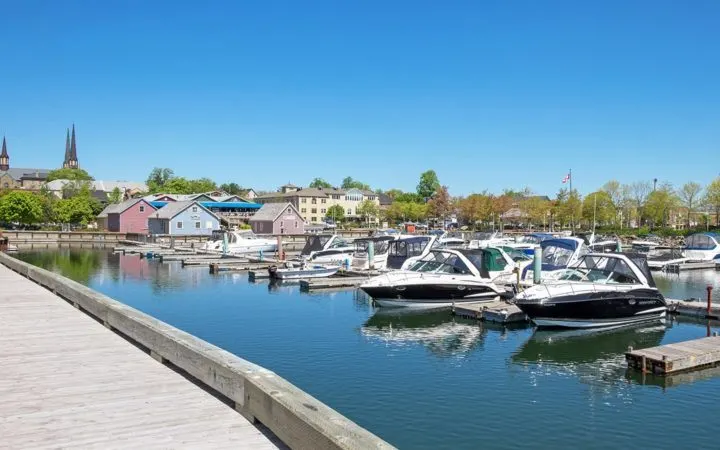
John Maloney
Saturday 30th of December 2023
Liked your article. We are heading to Las Vegas, Grand Canyon in April 2024. First time renting a conversion van. Looking forward to the experience.
Lucy Dodsworth
Tuesday 2nd of January 2024
Thanks – and hope you have a fantastic trip!
Shane Devenish
Tuesday 19th of December 2023
I really enjoyed your article Lucy. Are you agreeable if I share it on our website with credit to you?
Lucy Dodsworth
Wednesday 20th of December 2023
Hi Shane, I don't normally allow reproduction of full articles but very happy for you to publish and extract with a link back to the original for the full post. Thanks!
Linda
Monday 24th of July 2023
This article was fantastic. Thank you for sharing
Lucy Dodsworth
Monday 24th of July 2023
Thanks so much!
Stefania D'Angeli
Tuesday 20th of June 2023
Sounds sooooo cool! We are 3 Italians who would like to travel across Canada from Sept 20th for about a month. We have read that we could find some issues with the antifreeze that would NOT allow us to use any water, because looks like from Oct 1st the rentals empty the water tanks and put some antifreeze. Do you know anything about this? We are not planning to go anywhere (too) cold, except the first days in the National Parks and then towards the Great Lakes up to Toronto and Montreal. But we are wondering how could we travelling for more than a month without any water on board.
Thank you in advance for any help you could give!
Lucy Dodsworth
Sunday 25th of June 2023
Hi, I'm not hugely familiar with winter hire but it seems that winterizing is normally from mid-October to March so you might be able to avoid it with your dates – and there are some RV companies which hire RVs with heated water tanks that can be used all year. Otherwise you would have to access water at campgrounds. But it's speaking to the RV hire company and find out what they say based on your route as dates vary by region.
Gemma
Tuesday 13th of June 2023
Hi, are you able to "wild camp" in Canada in RV's? Eg not book a campsite and just find a nice spot to park for the night? Obviously leaving the area as you found it/if not cleaner?
Lucy Dodsworth
Thursday 15th of June 2023
Hi Gemma, wild camping is permitted in Canada but the rules do vary by province so you would need to check depending on where you're going, and it's generally not permitted in National Parks or Provincial Parks.